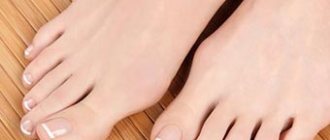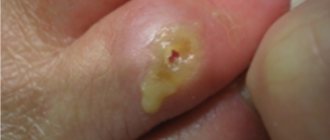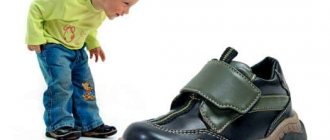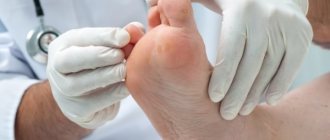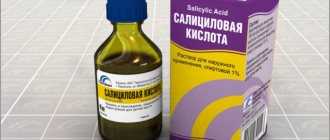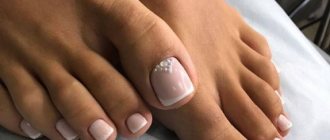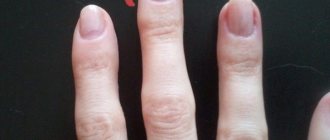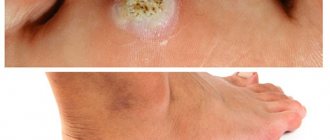Calluses on the feet are not a systemic problem that threatens health. Often such neoplasms are even ignored. However, the growths can be painful. In addition to physical discomfort, psychological problems arise: constant concentration on the pain syndrome when walking reduces the quality of life. The most common cause of blisters is uncomfortable shoes. We will tell you how to treat foot calluses caused by shoes in this article.
Shoes and calluses
Chafing of the skin of the feet usually occurs as a result of wearing recently purchased shoes. There may be several reasons for this:
- Poor quality material from which the inside of the shoe is made. A material that is too hard and inflexible will cause abrasions on the leather.
- Loose contact with the leg. If the fit is loose, there is space between the foot and the surface of the shoe. As a result, the shoe dangles slightly on the foot while walking. Constantly moving shoes and returning them to their original position leads to chafing of the skin and the appearance of calluses. To avoid this, it is recommended to select shoes that fit, and also tighten the laces or Velcro tightly.
- Shoes that are too tight are another cause of blisters.
- Feet also become chafing due to too intense walking.
- Women who wear tight shoes or abuse high heels especially often chafe their feet.
- Blisters appear on the heels due to the use of shoes without backs.
Complications
If an infection has entered the wound, obvious symptoms of the inflammatory process appear:
- pain increases;
- large swelling forms;
- the skin around becomes purple;
- intercellular fluid becomes cloudy;
- pus oozes from the burst bladder;
- Body temperature may rise.
You cannot self-medicate in such a situation. You need to urgently contact a surgeon.
The doctor will provide qualified assistance by opening the suppuration and cleaning the wound. After the procedure, you must maintain sterility and regularly go to the clinic for dressing changes.
Types of calluses and treatment methods
Types of calluses
There are several types of calluses:
- Watery. Most often they occur due to wearing uncomfortable shoes.
- Dry. Over time, they grow into the skin and acquire a core. Such calluses are also called core (or ingrown) calluses.
- Bone. They occur in areas where there is damage to bone structures.
- Corns. They are pathologically changed, roughened skin. When walking, corns cause quite sensitive pain.
Simply put, all calluses can be divided into 2 groups - wet (watery) and dry (all others).
Treatment of wet callus
To get rid of wet calluses on your feet caused by tight shoes, you can use a patch. In this case, you will have to temporarily stop wearing the shoes that caused the problem. However, this method of treatment is only suitable for wet calluses in the initial stage, when it is enough to eliminate mechanical impact on the damaged skin - and the neoplasm will go away on its own.
If the callus is mature, special measures will be needed. The fact is that when the membrane of a watery callus ruptures, there is a danger of infection, and this can cause all sorts of complications. It is possible, for example, to become infected with streptococcus or staphylococcus, which will lead to inflammation and a suppurative process. To prevent such developments, it is recommended to perform the following steps sequentially:
- Treat the damaged surface of the leg with brilliant green or iodine.
- Moisten a sewing needle in alcohol. Instead of a needle, a regular pin will do.
- Puncture the bubble with liquid. Moreover, the callus should be pierced strictly parallel to the epidermis. A perpendicular puncture is unacceptable, as this can damage the tissue under the bladder.
- One puncture may not be enough for normal drainage of exudate. Therefore, it is better to make a total of 2-3 punctures on different sides of the callus.
- It is very important to maintain the integrity of the walls of the bladder even after punctures (the skin should not be torn off). This will help protect the lower sublayer of the dermis.
- Exudate outlets should be wiped with a sterile cloth or bandage. While wiping, lightly press the callus to remove all the liquid.
- Treat with hydrogen peroxide (furacilin or another similar drug is also suitable). After this, apply a thin layer of antibacterial ointment to the wound. Apply a bandage on top and stick a plaster.
Watery calluses heal quickly and rarely become a serious problem.
Treatment of dry callus
If the callus is neglected and becomes dry, the therapeutic process becomes more complicated. You will need to use special methods to make the keratinized area of skin softer and more pliable.
The following medications are used in the treatment of dry calluses:
- Salicylic acid. Preparations containing salicylic acid provide quick relief from calluses. The mechanism of action of the ointment is based on burning out the pathological growth. Before rubbing with ointment, steam the damaged area of skin well, and then stick a plate with a cutout to the size of the callus on your foot. This measure is necessary to prevent the aggressive substance from coming into contact with healthy skin. It is recommended to use the drug 1-2 times a day. Preparations containing salicylic acid include: salicylic solution (like the ointment itself in its pure form), Namosol, Collomak, Salipod patch (impregnated with acid).
- Lactic acid. This substance is not as aggressive as salicylic acid, but is also effective. Preparations containing lactic acid are applied in a thick layer to the callus, and a bandage is placed on top. After just 1.5–2 hours, the skin becomes softer and can be scraped off with any suitable device. Remaining skin is removed with water. As a rule, to remove calluses, it is enough to use acid for 2–3 days. The following preparations contain lactic acid: lactic acid solution, Green Pharmacy, Super Antimozol.
- Celandine. The juice of this plant contains substances that help get rid of calluses and warts. The substances contained in celandine have a decomposing effect on dead skin. However, the juice is quite aggressive, you can use it for no more than 10 days, otherwise skin irritation cannot be avoided. A bandage soaked in celandine juice is applied to the callus for 10 minutes, 2 times a day. Also, celandine extract contains such preparations as Stop callus and Callus Ka.
- Sodium hydroxide. This substance is used as a component in a number of drugs used in the treatment of calluses (Antipapillom, Superchistotel). Sodium hydroxide rapidly decomposes calluses, causing dead skin to simply fall off. However, sodium hydroxide should be used very carefully so as not to injure healthy skin. The substance is applied with a special applicator included in the package with the drug.
- Phenol. Medicines containing phenol cauterize and mummify pathological tissues. After some time, the keratinized growth dries out and falls off. Phenol is contained in such drugs as Vartek, Verrukacid, Condilin.
- Refrigerants. Drugs in this group have a local cooling effect - so strong that the pathological structure is very quickly destroyed. First, under the influence of the refrigerant, a bubble with liquid is formed, which then dries out and disappears. Cryopreparations for the treatment of calluses include, for example, Cryopharm and Wartner. The peculiarity of treatment with refrigerants is that after exposure to them, calluses no longer form in these places.
Heel spurs
Very often, a corn is confused with a heel spur. The latter is a rough growth formed near the heel bone. Standard treatments for calluses will not help in the fight against spurs, since the pathology is not just rough skin, but the deposition of potassium salts on the bone structure.
You can get rid of heel spurs using shock wave therapy. The technique consists of impacting air on the accumulation of potassium salts. The therapeutic process increases local blood flow and softens the formation, which eventually disintegrates.
Appearance mechanism
Wet calluses occur in areas of greatest friction. A sharp mechanical impact provokes peeling of the epithelium and inflammation. The injured area swells slightly. The bladder begins to grow, gradually filling with intercellular fluid. If there are particles of blood in it, it means that small vessels are damaged. In both cases, painful sensations are disturbing. When pressing on the blister, the walls become tense, the burning sensation and discomfort intensify.
If the negative impact on the affected area continues, the bubble ruptures. Fluid saturated with leukocytes flows out. Through the wound, infection easily enters the body, leading to suppuration.
The mechanism for the appearance of water calluses differs from the usual roughening of the skin. Corns and dry patches are the result of regular minor irritation. From it, the top layer of cells slowly dies. The keratinization protects the deep layers of the dermis from destruction, but it looks unsightly and can interfere with walking.
ethnoscience
For treatment, a remedy from the arsenal of traditional medicine is used, such as a bath with medicinal herbs:
- Steam the callus in hot water.
- Add chamomile and calendula infusion to your bath. You can also add a little tea tree oil.
- Treat the callus with a pumice stone.
- Apply a healing medication to the problem area.
- Wear warm socks to keep you warm.
Other baths based on traditional medicine:
- Add 2 tablespoons of baking soda and 3 tablespoons of sage to a 5-liter container of boiling water. Let the solution brew. Steam your feet in the infusion for 20 minutes.
- Add a couple of baked onions to 3 liters of water. Boil the mixture for 5 minutes and then let it brew for half an hour. Strain the liquid and steam your feet in it.
Other methods involve applying traditional medicine to the callus:
- A mixture of chicken egg and vinegar. A fresh egg should be kept in vinegar until completely dissolved. Apply the resulting composition to the callus and do not wash it off until the morning. Apply a warm bandage on top.
- Aloe leaves are used to combat calluses. Before use, they should be mashed so that the plant releases its juice. The leaves are fixed on the leg with a warm sock.
- Propolis compress. The procedure is designed for wearing a compress for 48 hours.
- Onion peel. Add the raw materials to a container with vinegar solution. Infuse the mixture in a tightly sealed container for 2 weeks. Apply the prepared solution to the callus, previously lubricated with a rich cream. Place the husk on top and secure it with a bandage. Perform the procedure at night.
- Honey. Spread the product on the callus, apply plastic wrap on top and put on warm socks. In the morning, remove the bandage and treat the tumor with cream.
Surgery
If medications and folk remedies do not produce results, surgical methods may be used.
The following technologies are used to remove calluses:
- Grinding. The intervention is a painless procedure during which the growth is removed using a special grinding machine.
- Laser therapy. A thin laser beam cuts off the pathological tumor without affecting healthy tissue. Laser therapy not only removes the callus, but also prevents recurrence. The procedure is painless and there is no risk of infection.
- Cryotherapy (exposure to cold). The callus is destroyed by treating the new growth with liquid nitrogen.
- Drilling out the rod. To remove calluses, a special device equipped with attachments is used.
Prevention
The appearance of calluses can be avoided if you follow certain rules:
- Wear only comfortable shoes. High-heeled shoes can be beautiful, but it is better to wear them only in exceptional cases.
- Wear orthopedic insoles that allow the foot to be in an anatomically natural position, which reduces the load on the skin of the legs.
- Stockings and socks should be made from natural materials. This will prevent excessive sweating in the foot area.
- Treat emerging calluses in a timely manner.
To prevent shoes from rubbing
To prevent shoes from rubbing calluses on your feet, it is recommended to adhere to the following principles:
- Treat areas where shoes rub with vodka or alcohol. After this, put on your shoes and walk in them for 10–15 minutes. This simple manipulation will allow you to break in uncomfortable shoes.
- Purchase specialized foam or cream for stretching shoes. Most often, such chemicals are intended to affect leather shoes. Just as in the case of vodka, after applying the creamy substance, you need to walk around in your shoes for a while so that they stretch.
- Lubricate sensitive areas with wax or soap.
- Treat shoes with vinegar. After this, leave a cloth soaked in vinegar in it for 8–10 hours. To neutralize the vinegar smell, it is recommended to use hydrogen peroxide.
- Place an adhesive plaster on the problem areas of the shoe. Please note that the patch should be applied to shoes, not to feet. Walk around in such shoes for several days in a row. As soon as the discomfort stops, the adhesive plaster can be removed.
- The easiest way to stretch your shoes is to expose them to hot water. Soak a piece of cloth in hot water and place it in the problem shoes. After 5-10 minutes, put it on thick socks. Walk like this for an hour.
- Special silicone pads (heel pads) are available for sale. The purpose of the linings is to protect the feet from hard areas of the shoe. The linings are small in size, securely fixed inside the shoes and do not put pressure on the foot. Attach heel guards to the heel or side of the shoe.
- Instead of linings, you can use soft strips. They are produced by shoe companies.
- Another way to protect your feet from chafing is to wrap them. Wrap the shoe box with a damp cloth (cloth, towel) overnight. This will increase the humidity in the box and cause the shoes to expand slightly.
- Another option, based on the effects of heat and humidity on the skin, involves using a household hair dryer. You need to direct a stream of hot air onto the shoes, which are slightly moistened from the inside. After warming up the shoes for 10 minutes, put them on and wear them for 10–15 minutes.
Recommendations for purchasing shoes
To avoid problems with calluses, when buying shoes, it is recommended to adhere to the following principles:
- Avoid purchasing tight shoes. No beautiful model is worth attention if wearing it will cause problems in the future.
- If you have flat feet, it is recommended to consult a podiatrist before going to a shoe store. Orthopedic insoles largely solve the problem of calluses.
- If you have to walk for a long time, you should not wear recently purchased shoes - first they need to be broken in well.
- In advance, even before the problem appears, cover the most vulnerable places of the foot with adhesive tape.
- To soften the load on the skin of the feet, use silicone inserts.
If you have complaints about calluses, you can contact a dermatology office. Before prescribing a therapeutic course, the specialist conducts differential diagnostics to exclude diseases with similar symptoms. Removal of tumors is carried out in a cosmetology office or by a surgeon.
How long to wait for recovery
Healing of calluses is a process that takes a certain time, and in some cases the speed of recovery depends on whether there was artificial intervention.
So wet calluses, when the factor that caused them is eliminated (stress, uncomfortable shoes) and without violent rupture of the blisters, disappear in 4-5 days .
Getting rid of dry formations lasts longer - if you do not pick out dry crusts, but use a special patch to soften rough skin, you will need 3-4 sessions on average of 2 days, that is, 6-8 days .
Core calluses – formations that have a hole in the central part with a fairly deep (up to several millimeters) rod that goes deep into the body – cannot be treated at home . Removal of such calluses is carried out in a medical facility, so the period of getting rid of them depends on how soon the patient sees a doctor and undergoes the appropriate procedure. Healing after treatment will last no more than 7 days.
Photo 2. A wet callus can easily become infected. It needs to be processed and closed from external influences as soon as possible. Source: Flickr (Marc ROUX).
